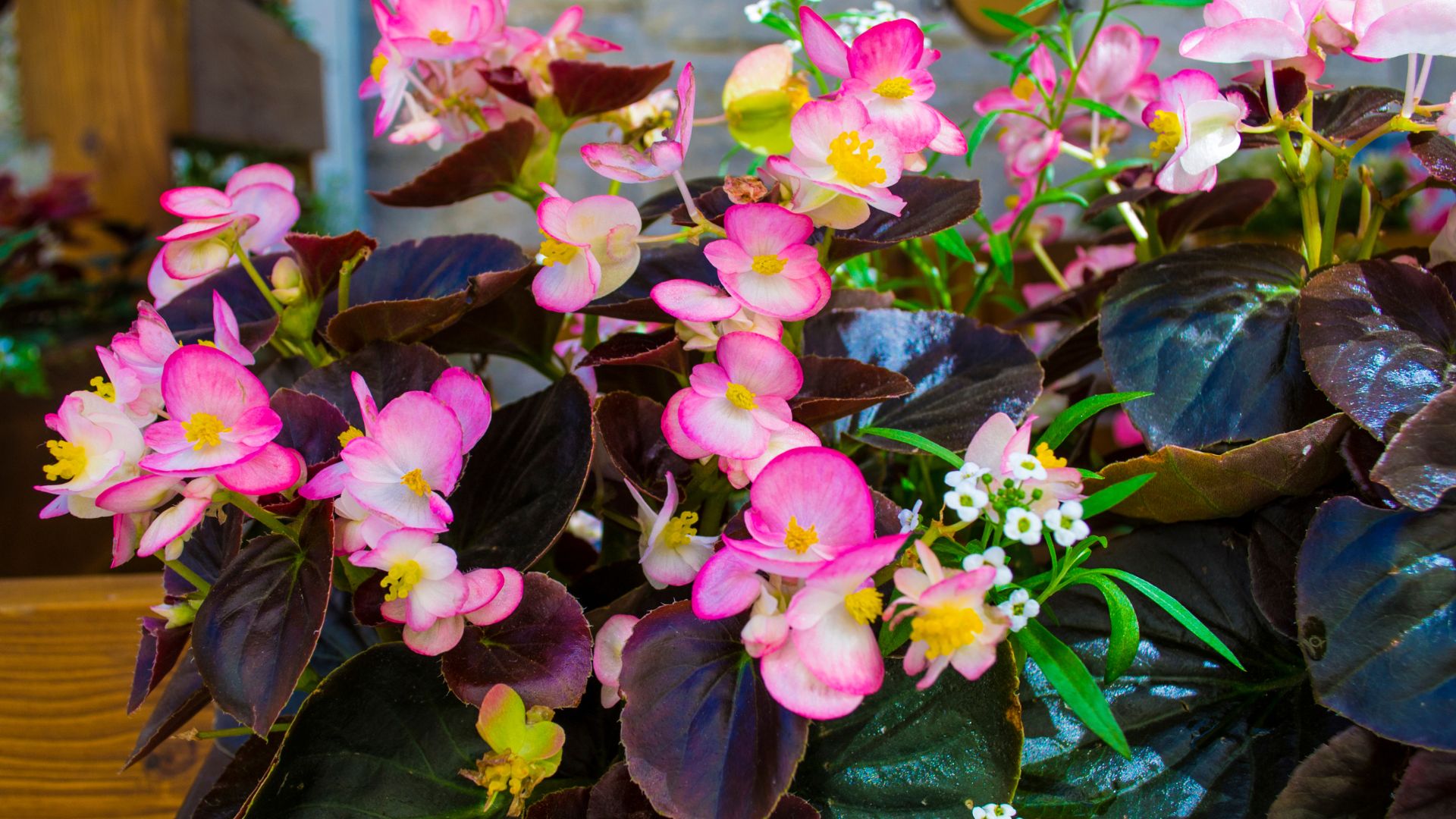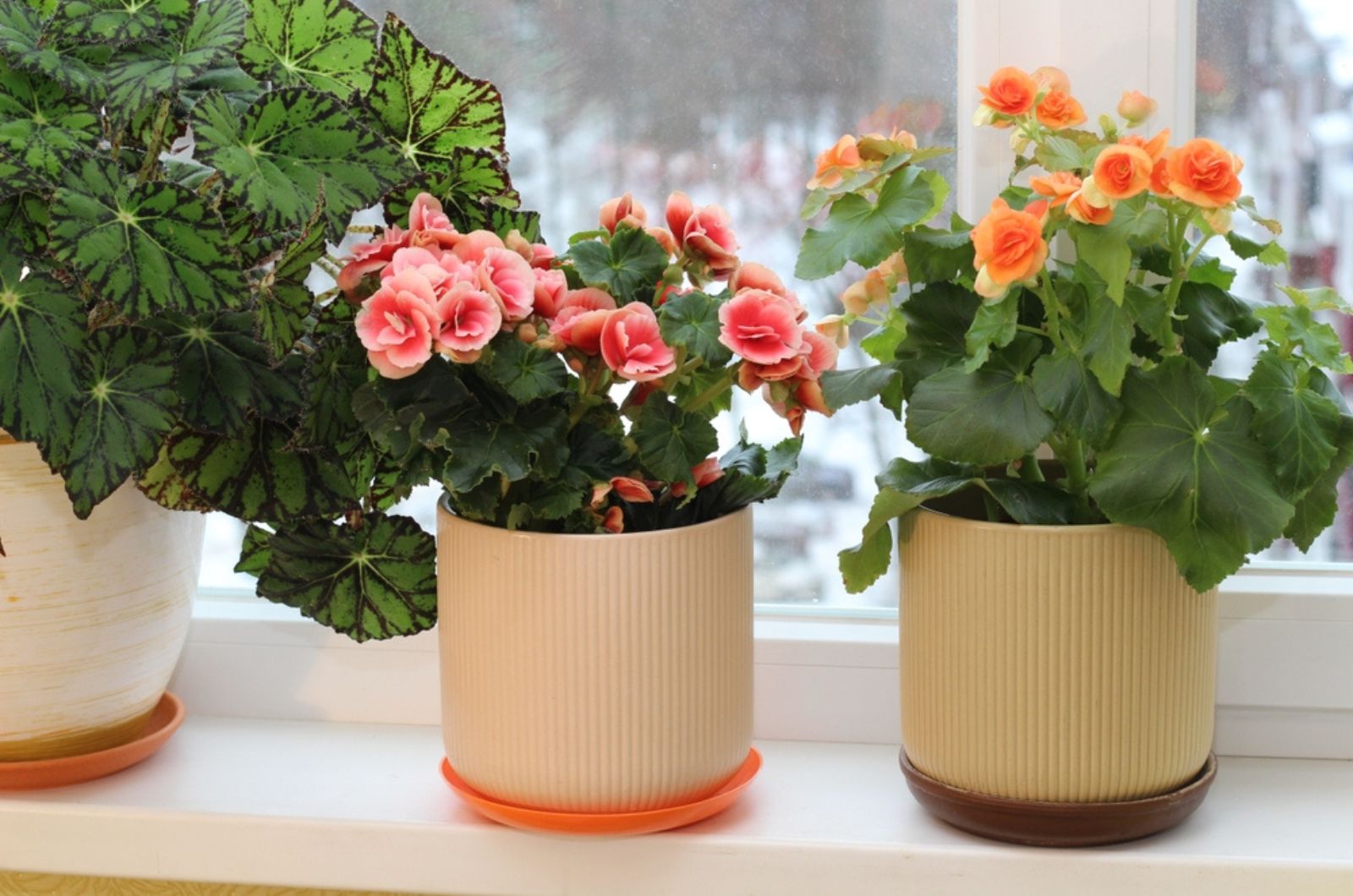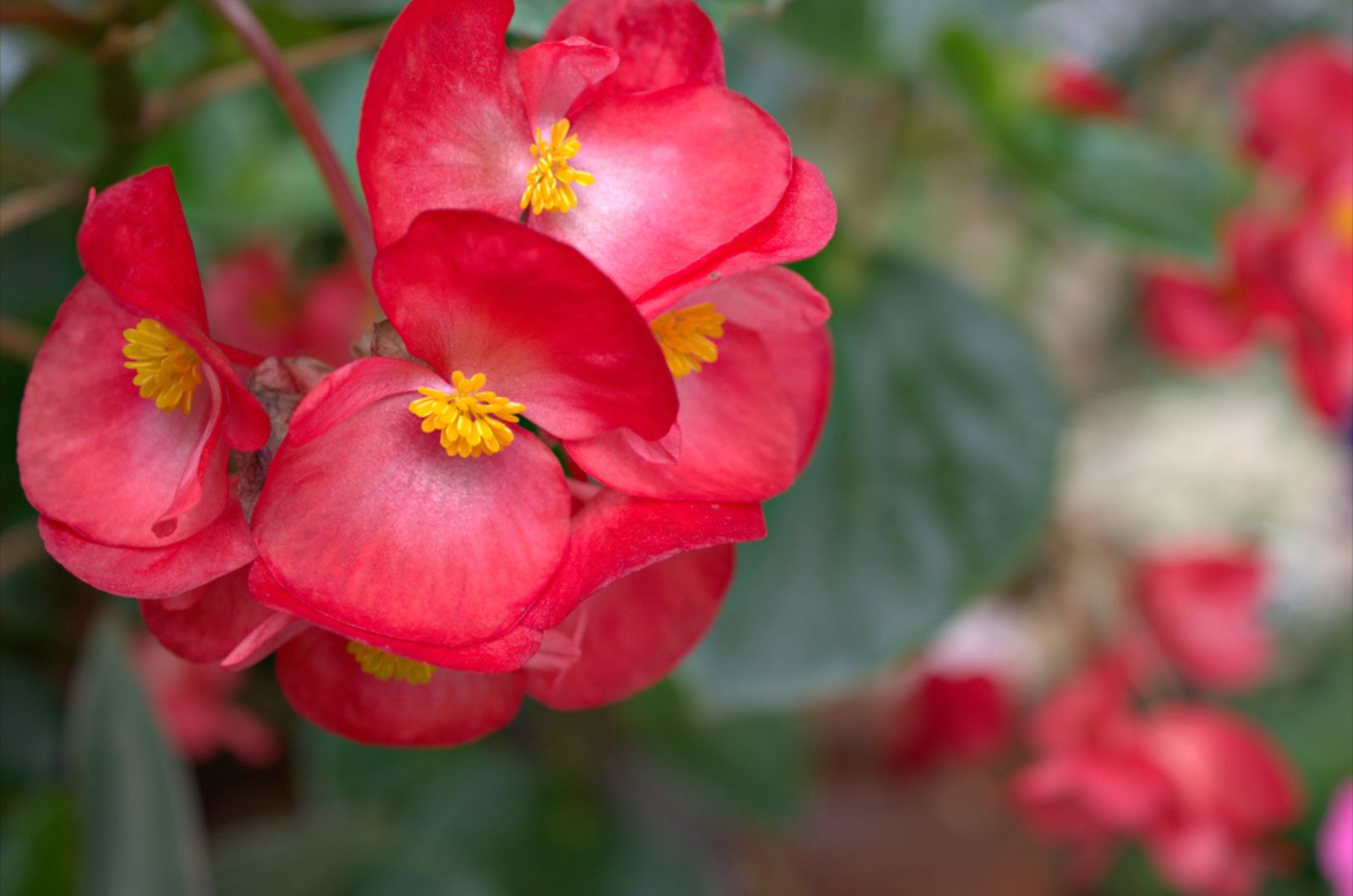Begonias are plants with a year-long interest, allowing you to enjoy their vibrant flowers in summer and fall before switching to their gorgeous foliage the rest of the season.
You can grow them in pots or in your garden to create more depth and interest. However, they do need some protection during winter, which is why most gardeners take them indoors.
But how do we overwinter begonias? Do we just move them from a porch to a living room, or is there more to it?
There definitely is, and here are some tips that can help you keep your begonias safe during winter.
Let’s get started!
Overwintering Potted Begonias
If you’re already growing your begonias in containers, then you’ll be glad to hear that they’re easy to overwinter.
Just take them indoors before the temperatures drop below 60°F. And what’s even better is that you can keep varieties with fibrous roots, such as trailing, wax, cane-like, etc., as houseplants all throughout winter.
Care for these plants as you normally would, just don’t fertilize them during winter and make sure to reduce watering a bit because they won’t need as much.
In spring, these plants will resume their growth and you can move them outside once all danger of spring frosts has passed.
Of course, there are more potted begonia care tips, so make sure to follow them in order to keep these plants healthy and thriving.
Overwintering Begonias Bulbs
If you have tuberous begonias, you can simply overwinter their bulbs without the fuss of caring for the entire plant.
Wait until the leaves and stems turn yellow and wilt, then cut them back to about an inch above the bulbs.
The next thing you should do is dig up the tubers (bulbs) before the first fall frost hits, trying not to cut or damage them in any way.
Remove the soil from these bulbs and hang them in your garage, shed, or anywhere where it’s cool and dark. Keep them like this for 2-3 weeks until they dry out.
Then, fill a cardboard box with some coco coir, vermiculite, or even sawdust and place the bulbs in it. Cover them with more of the same medium and store them at temperatures of around 40-50°F.
Make sure your location is cool, dark, and dry and then plant them in May or April either indoors or in a greenhouse, transplanting them outdoors in May.
Saving Begonias For The Next Season
If you want to save your flowering begonias, you have to look for varieties with fibrous roots. These belong to species such as wax, cane-like, thick-stemmed, shrub, and trailing begonias.
Of course, if you have hardy or tuberous-root varieties, you can always save their bulbs and plant them the following spring.
And if you have some of these begonia varieties and live in a region with mild winters, you can simply mulch them and leave them in the ground.



